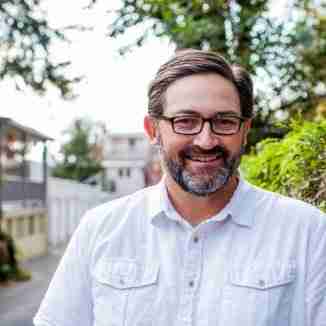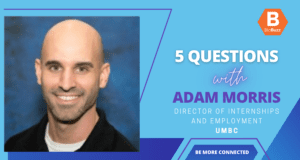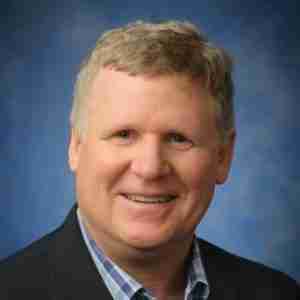
In Conversation: Maria Lopez, General Manager, U.S. Cell Therapy at Catalent Biologics
Catalent Biologics (Catalent), a global contract development and manufacturing organization (CDMO), is a leader in providing comprehensive solutions for life sciences companies of all sizes. Catalent’s 19,000+ employees and approximately 2,500 scientists partner with pharma, biotech, and consumer health companies to optimize product development, launch, and full life-cycle supply for patients around the world.
Catalent is headquartered in Somerset, New Jersey, and operates over 50 sites around the world with a growing footprint in Maryland.
In April 2019, Catalent acquired Paragon Bioservices, based in Baltimore, for $1.2B, which included Paragon’s headquarters at the University of Maryland BioPark. In October 2021, Catalent announced a $230M expansion of its gene therapy campus near Baltimore-Washington International (BWI) Airport in Harmans, Maryland. The company has additional offices in Rockville and Gaithersburg to round out its footprint in the BioHealth Capital Region (BHCR).
Catalent’s growing presence in the BHCR is a reflection of the region’s status as a top U.S. life sciences hub and the continued growth of Maryland’s emerging cell and gene therapy sector. Catalent has become another important anchor, like Human Genome Sciences and MedImmune before it, within the region’s evolving life sciences ecosystem.
We recently caught up with Maria Lopez, General Manager of Catalent’s Houston, Texas and Princeton, New Jersey cell therapy sites, to discuss her career, Catalent’s mission, and the exciting promise and ongoing challenges facing cell therapy manufacturing.
Tell our audience about your career journey that led to your current role at Catalent.
My career started as an assay developer in the 1990s with a startup doing gene therapy development work. I then moved into quality assurance at that same company and spent most of my career in QA. I later went to work for Immucor before joining Ciba Vision, where I experienced its merger with Novartis and helped with that integration.
I’ve spent a good deal of my career performing remediation projects, which are always fun because you learn and grow a lot.
I eventually moved on to a CDMO called Cytovance Biologics as the Head of Quality. I helped bring their facility up to production level and worked with monoclonal antibodies and 50+ clients. We expanded their footprint from two buildings to three plus a warehouse. Big growth. This is where I started to grow my experience in operations.
I eventually left Cytovance and joined a small, 26-person startup called Siwa Biotech where I helped bring two diagnostic products to market as their Vice President of Quality. I missed my time at bigger companies, but then joined MaSTherCell in Houston, and a few weeks later Catalent acquired the company.
Once Catalent acquired MaSTherCell, I stepped more fully into the operations side and took over as General Manager (GM) of the Catalent Houston facility where I helped the team support clinical trial manufacturing for several clients. That work is still ongoing. We then expanded the business by purchasing our facility in Princeton, New Jersey this past April.
So, I’m now the GM of the Houston and Princeton sites. We’re actively upgrading the Princeton location from a single to multi-product facility and getting it ready to support late-stage clinical and commercial products.
What is your main focus right now as GM of the Houston and Princeton facilities?
For the Houston and Princeton cell therapy sites, it’s about partnering with various clients at different stages of the process. We engage with clients, projects, and processes at various stages of maturity—and work from concept and development to getting the process into clean rooms, setting controls, and safety protocols – all the way through Phase 3 trials and eventually commercial approval and supply.
We translate ideas and development work into the GMP process. Our goal is that every one of our clients commercializes their products and delivers a therapy that provides a better quality of life to patients across the world.
We know a lot of ideas and concepts don’t make it, but I tell my team that we need to treat every client as though every product they bring to us is going commercial; we need to treat them with that level of respect and commitment because a few of these products will get to market, and we want to be sure we did everything right along the way.
What makes Catalent a CDMO of choice?
Beyond our great team and global capabilities, I think what makes Catalent a top CDMO is our mission. We have a Patient-First mentality. We keep that in the forefront of all our projects.
We also strive to build long-term relationships with our clients so we understand their expectations and needs, and they understand our regulatory and compliance expectations. This helps us to better align and form a strong partnership. What’s important is getting to market in the right way, and Catalent understands this.
If we look at early phase projects, our team brings its knowledge and experience to create oversight and guidance that sets a project up for success at the start, so things don’t need to be redone. Catalent is focused on getting our clients through their clinical phases as quickly and effectively as possible.
We work with clients from academia and clients that have commercialized products, so we are really good at using our knowledge to help those new to the industry and those that have decades of experience.
We’re always learning from our clients, and they learn from us, and we put our heads together to find better ways to overcome challenges and move products forward.
How do the Maryland sites in Baltimore, Rockville, and Harmans/BWI fit within the overall cell and gene therapy business at Catalent?
In Houston and Princeton, we’re focused on cell therapy whereas the Maryland sites are more focused on gene therapy, which are related industries but are not the same when it comes to CDMO support. Cell and gene therapy often get lumped together, but they’re different in many ways. I see gene therapy as more of a biologics process with big equipment whereas cell therapy is more boutique and clinical.
That said, at Catalent we’ve adopted a campus mentality when it comes to our cell and gene locations. We want to make sure we’re connected across the sites. For example, the BWI site will do gene therapy work and some of those standardized processes will flow over to the cell therapy side.
Calalent Harmans Now Hiring
Engineering Technician (multiple shifts) Job in Harmans, Maryland
Sr. Investigator Job in Harmans, Maryland
Process Engineer (MS&T) Job in Harmans, Maryland
Manufacturing Supervisor Job in Harmans, Maryland
Sr Manager, Manufacturing Process Execution Job in Harmans, Maryland
We always work to standardize quality processes across all sites. We want to be as much alike as possible so that we can share best practices and bring consistent results across our sites.
The goal is to be aligned across the sites so when a client visits multiple sites in our network, they get the same feel, see the same culture and quality systems, and we’re all speaking the same language.
What are some of the biggest challenges facing cell therapy manufacturing and commercialization, in your opinion?
What keeps us from getting to commercialization more quickly? Everything is still so unique in cell therapy. The vast majority of our clients have very unique processes. This can really hinder creating standardized processes.
If you think about gene therapy processes, you have a more uniform process. In cell therapy this isn’t the case, and operations can still be very open and manual. From a cell therapy perspective, we try to help our clients automate their processes more, which reduces contamination and other risk factors.
This is really about creating space for great ideas early on while also putting on our GMP hats so we can do our work right consistently.
What we’re seeing in cell therapy is what we used to see in biologics in its earlier days. As biologics matured and grew, operations standardized and greater efficiencies were realized. I think we’ll see this same growth in cell therapy so that we can create better standardization, especially with autologous cell therapies that come from an individual patient and are put back into that same patient. Allogeneic cell therapy processes are a bit more set, but on the autologous side, closing and simplifying the process with our clients is still really important.
Catalent has thousands of really smart people creating solutions for our clients that will help to solve these challenges going forward.
- About the Author
- Latest Posts
Steve brings nearly twenty years of experience in marketing and content creation to the WorkForce Genetics team. He loves writing engaging content and working with partners, companies, and individuals to share their unique stories and showcase their work. Steve holds a BA in English from Providence College and an MA in American Literature from Montclair State University. He lives in Frederick, Maryland with his wife, two sons, and the family dog.





